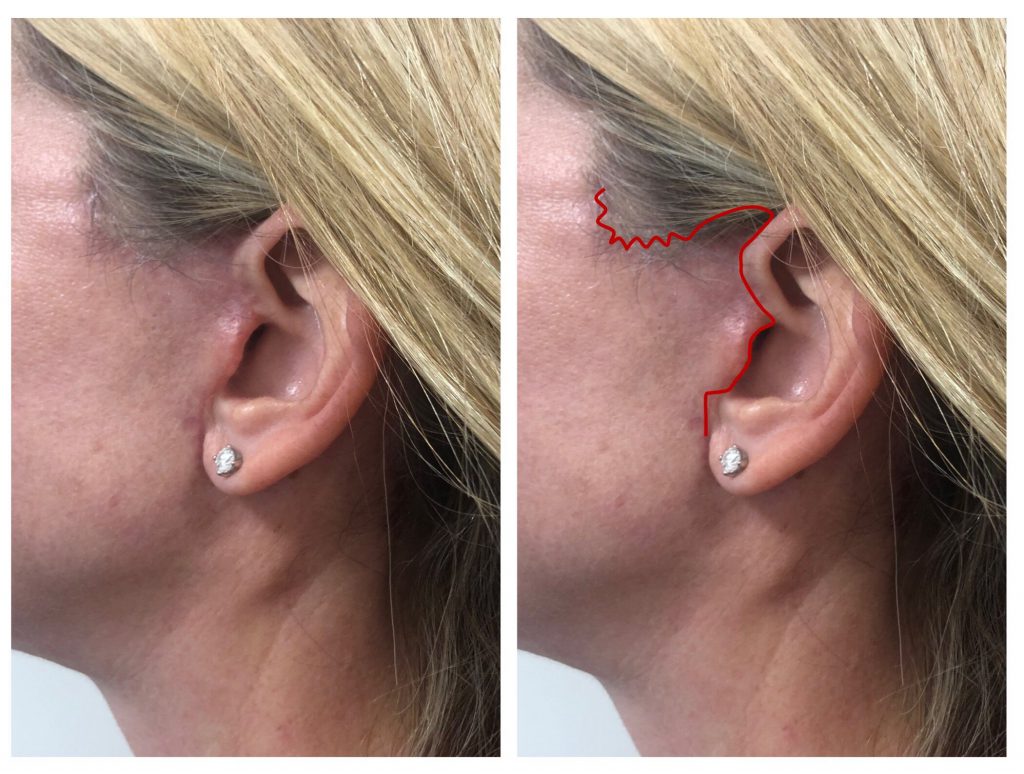What is a lift and fill facelift and how does it alter the face?

A lift and fill facelift is a modern approach to facial rejuvenation. It involves a combined approach of suspending the deep tissue of the face (lift) and restoring lost volume to help even out facial contours and deliver a soft augmentation through fat injection (fill). By addressing the underlying roots of the ageing process, it is both effective and can deliver a very natural and refreshed look.
What is the process of a lift and fill facelift procedure from start to end?
The procedure is performed under general anaesthetic or local anaesthetic with sedation. Patients can elect to stay the night in hospital or go home on the day of surgery (daycase) if there is a responsible adult at home with them.
The facelift is achieved through carefully hidden incisions – allowing suspension of the deep tissue and removal of excess loose skin. The incisions are closed with sutures that are removed after one week. During the same operation, fat is harvested through a tiny incision in a process similar to liposuction. The fat is purified and then injected with pinpoint accuracy using small cannulas into different areas of the face – cheeks, temples, nasolabial folds and eyebrows.
The downtime is around two weeks, which is the time it takes for the bruising to fade and the recent signs of surgery to become less apparent.

LIFT AND FILL FACELIFT AT 3 WEEKS SHOWING HOW WELL CONCEALED THE SCARS ARE.
What are the risks and possible complications?
As with any surgery, there are general risks such as infection or bleeding (return to theatre uncommon), minor wound gaping, swelling and minor asymmetry. Numbness of the cheek and ear are common early on but generally become normal over a period of a few months.
The scars are often inconspicuous but occasionally may be lumpy or red early on. Some of the fat is absorbed by the body.
Very rare but more serious complications include weakness of facial muscles (e.g. causing lower lip asymmetry – 1% transient, less than 0.5% permanent) or fat embolus.
What does the aftercare involve?
Patients are seen after one week in the clinic to remove the sutures and to assess the healing. I often see patients again after two weeks to give scar treatment advice and make sure everything is progressing as expected. After that, clinic reviews are arranged for every three months or more often if any concerns arise.
Can lifestyle choices post-op affect the results?
The main risk factors for facelift surgery are smoking and high blood pressure. It is very important to stop smoking at least four weeks prior to surgery to give yourself the best chance of healing without complications.
For patients that suffer with hypertension, it is best to make sure it is well controlled before undergoing surgery. Regular exercise, careful diet and routine check-ups at the GP practice will ensure you are prepared!
Previous Post Next Post